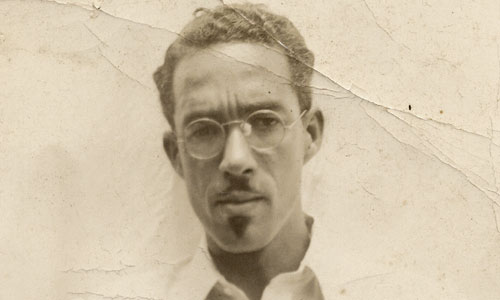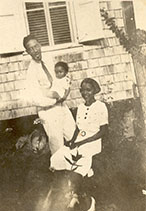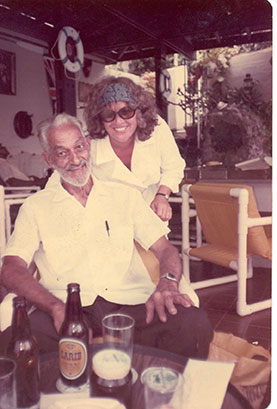
Edgar Challenger was born on the 29th November 1905, the youngest son of John Oscar Challenger and Louisa Wynter. He attended Miss Malvena Amory’s infant school and received his primary education at the school run by Miss Connie Wattley. At age twelve he entered the St. Kitts-Nevis Grammar School, but following an incident with his teacher of Latin he refused to attend any further classes. Instead young Edgar was sent to Lodge School in Barbados where he passed the Cambridge School Certificate Examination excelling in Math and Science.
When Edgar returned to St. Kitts at nineteen years of age he worked briefly in the family business International House on the corner of Princes and Church Street. Eventually, however he went to Canada to pursue studies in the commercial field and then to City College, New York to work towards a degree in Biology. It was at City that the twenty-three year old Challenger sought to do a course in Caribbean history. As no such course was offered, he abandoned the studies that he had registered for and started his own research into this new topic. A job with a firm of florists in Brooklyn provided him with an income and a chance to learn horticulture.

In 1933 he married Rubina Ginyard of South Carolina and returned to St. Kitts. Together with their young son, the couple took up residence on Central Street and Edgar found himself managing the declining family business.
It was at this time that Thomas Manchester, persuaded Edgar Challenger to join the Workers’ League, where he quickly rose to the position of vice-president. In 1937, in the first election held in St. Kitts for 60 years, Challenger was elected a member of the Legislative Council.
In 1939 the Workers’ League spearheaded an attempt to organise a trade union. Edgar Challenger became its first President. He saw the Union as the bargaining body for workers. Sugar Factory workers were deeply involved and their section was established on the 28 February 1940. Labour unrest soon followed when factory workers went out on strike against what they considered bad faith on the part of management. They decided to call the new union to negotiate on their behalf. The union leaders took over the conduct of the strike with Challenger, Sebastian and France commencing negotiations. Halbert organised a strike fund and Challenger’s business supplied most of the food without much expectation that the debt would be repaid.
The strike lasted seven weeks. The Factory employed strike breakers and soon after the Defense Force was mobilised. Seeing that the Factory had the power of the Government behind it, Challenger and the other leaders appealed to the workers to return to work. His moving patriotic address had the desired effect. The Sugar Factory however, refused to re-employ 176 workers including the eleven militants dismissed at the beginning of the strike and the workers became aware of the need for greater solidarity within their ranks. In April 1940, Challenger also managed to avert a strike of the waterfront workers by offering to negotiate on their behalf. This time he was able to win a 10% wage increase from the shipping agents.
In October 1942, Challenger distributed a circular on behalf of the union leadership outlining the interdependence of capital and labour. He noted the Union’s failure to gain adherents among the field workers and the lack of consideration given to Union demands by the Sugar Producers’ Association. Despite difficulties Challenger remained an advocate of responsible action and in view of the war in Europe, he persuaded the Executive to pass a ‘no strike’ resolution. Another industrial dispute the following year prompted an inquiry which favoured the continuation of a bonus rejected by the SPA. The Union Executive felt it was time for action and with Challenger in Antigua rescinded the ‘no strike’ resolution and called for a general strike in the sugar industry. On the 23 April 1943, Edgar Challenger requested a six month leave of absence. His leadership had been dramatically weakened by the death of Thomas Manchester in 1942 and he did not attempt to resume his position. Instead Challenger devoted the rest of his life to researching Kittitian history and answering queries on genealogy often from researchers abroad.

Edgar Challenger died on the 28th November 2000.




